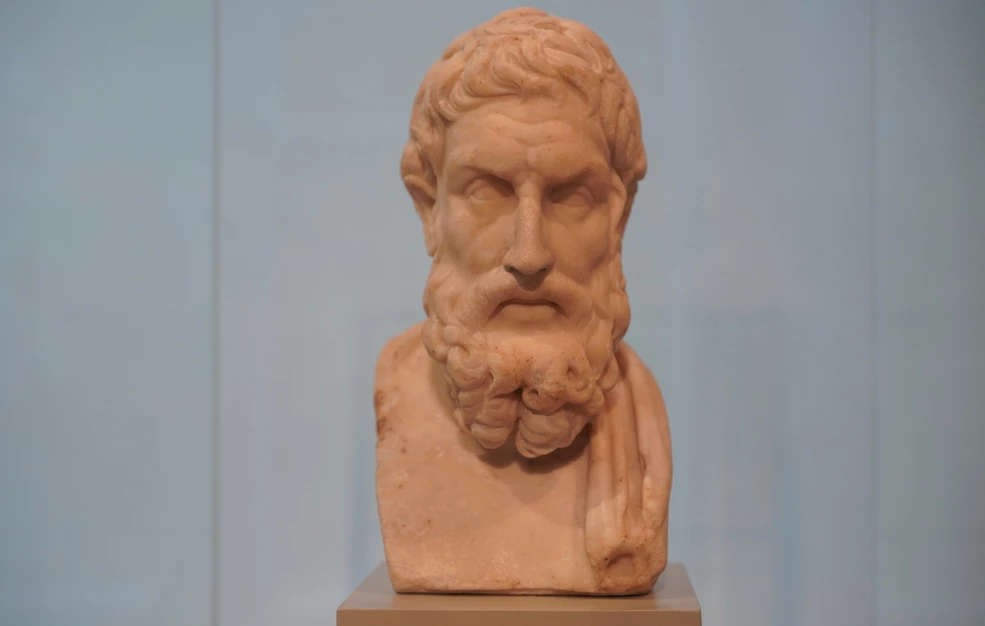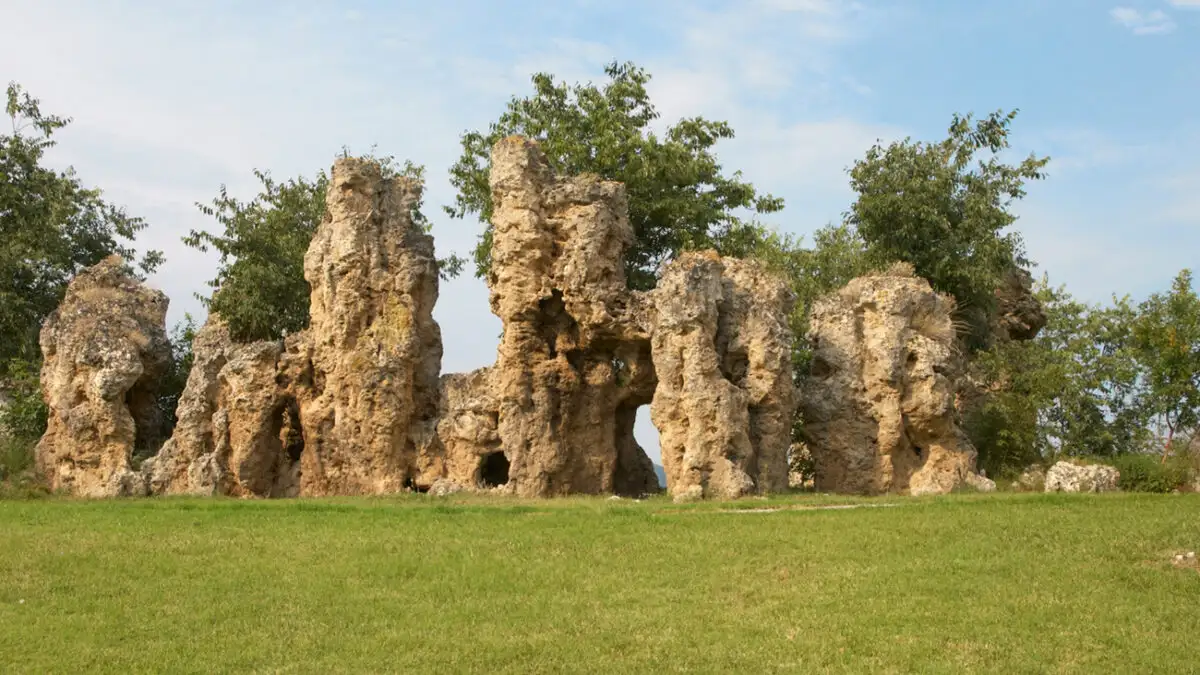The history of Greece is a tapestry woven from millennia of human experience, innovation, and conflict. From the earliest traces of human life in the Paleolithic era to the profound impact of Roman rule, the Greek peninsula has been a crucible of civilization. This article explores the significant periods of Greek history, highlighting key developments and transitions from prehistoric times through the Roman conquest.
Prehistoric Greece
The Paleolithic Period (2.5 million – 10000 BCE)
One of the earliest known human presences in Greece is represented by the Petralona skull, dating back to between 700,000 and 160,000 years before the present. This early human fossil, discovered in the Petralona Cave in northern Greece, provides crucial insights into the early inhabitants of the region.
The Apidima Cave in the Argolid offers the earliest evidence of modern humans (early Homo sapiens) outside Africa, dating approximately 210,000 years ago. These findings mark a significant milestone in understanding the migration and adaptation of early humans in Europe.
The Mesolithic Period (13000 – 7000 BCE)
By around 13,000 BCE, Greece was experiencing significant changes in its prehistoric societies. The Mesolithic era is notable for the earliest evidence of burials found in Franchthi Cave, which suggests the development of complex social and ritual behaviors.
During this time, there is evidence of a food-producing economy, simple hut construction, and seafaring activities in mainland Greece and the Aegean. This period set the stage for the transformative Neolithic developments that would follow.
The Neolithic Period (7000 – 3000 BCE)
The Neolithic era in Greece is marked by the establishment of permanent settlements and the development of advanced social structures. Key developments include:
Sesclo Megaron House (5700 BCE): One of the earliest examples of complex residential architecture in central Greece, indicating an increase in social organization and community planning.
Dimini Fortifications (3400 BCE): Evidence of early fortifications at Dimini suggests that societies were beginning to organize and protect themselves more effectively.
Vasiliki and Myrtos Houses (3200 BCE): The houses in these settlements reflect advancements in construction techniques and social complexity.
Messara Tholoi and House of Tiles at Lerna (3200 BCE): These structures demonstrate the evolution of communal and ceremonial buildings during this period.
The Aegean Bronze Age (3000 – 2000 BCE)
The Aegean Bronze Age is characterized by the rise of several important cultures:
Minoan Prepalatial Period (3000 – 2600 BCE): The early Minoan civilization on Crete, known for its advanced architecture and art.
Early Cycladic Culture (3200 – 2000 BCE): Notable for its distinctive marble figurines and complex social organization.
Early Helladic Period (3000 – 2000 BCE): Represented by developments in mainland Greece with increasing architectural sophistication.
The Minoan Protopalatial Period (2000 – 1700 BCE)
This period saw the rise of Minoan palatial complexes, characterized by:
Destruction of Minoan Settlements (2000 BCE): This marks a significant shift in Minoan society.
Settlement of Akrotiri, Thera (1700 BCE): The settlement was a thriving urban center before being destroyed by a volcanic eruption around 1627 BCE.
The Late Bronze Age (1600 – 1100 BCE)
The Late Bronze Age is a time of significant cultural and political development:
Minoan Neopalatial Period (1700 – 1400 BCE): Characterized by advanced palatial complexes and cultural achievements.
Grave Circle A and B at Mycenae (1600 – 1300 BCE): These tombs reflect the rise of Mycenaean civilization, known for its heroic legends and extensive trade networks.
Destruction of Minoan Palaces (1370 BCE): Followed by the Mycenaean domination of the Aegean.
The Heroic Age (1600 – 1100 BCE)
Tholos Tombs at Mycenae (1550 BCE): These monumental tombs indicate the Mycenaeans’ complex social structures and their connection with the broader Mediterranean world.
Linear B Writing (1450 – 1180 BCE): The use of this script reflects administrative sophistication and the Mycenaean's advanced state bureaucracy.
The Dark Age of Greece (1100 – 700 BCE)
Following the fall of Mycenaean civilization, Greece entered a period of significant decline and transformation:
Proto-Geometric Period (1100 – 900 BCE): Marked by the gradual recovery from the collapse of Mycenaean society.
Geometric Period (900 – 700 BCE): Witnesses the revival of artistic and cultural activities, including the recording of Homeric poems and the establishment of the Olympic Games (776 BCE).
The Archaic Period (700 – 480 BCE)
This era is characterized by the rise of city-states (poleis) and significant cultural developments:
Orientalizing Period (circa 740 – 650 BCE): Noted for increased interaction with the Near East and the adoption of new artistic styles.
Archaic Innovations (650 – 480 BCE): Includes the development of early Greek democracy, the creation of the Greek alphabet, and the flourishing of lyric poetry.
Key Events and Figures
Solon (594 BCE): Introduced legal and economic reforms in Athens that laid the foundation for Athenian democracy.
Perikles (460 – 429 BCE): Led Athens during its Golden Age, overseeing the construction of the Parthenon and the expansion of the Athenian empire.
Peloponnesian War (431 – 404 BCE): A protracted conflict between Athens and Sparta, leading to significant political and social upheaval.
The Classical Period (480 – 323 BCE)
The Classical period is marked by the height of Athenian democracy, cultural achievements, and military conflicts:
Persian Wars (497 – 479 BCE): Includes key battles such as Marathon (490 BCE) and Salamis (480 BCE), where Greek city-states successfully repelled Persian invasions.
Socrates, Plato, and Aristotle: The era of philosophical flourishing, with Socrates’ trial and execution (399 BCE) and the foundation of philosophical schools by Plato and Aristotle.
Peloponnesian War and its Aftermath: The war’s conclusion led to a period of instability and the eventual rise of Macedon.
The Hellenistic Period (323 – 146 BCE)
Following the death of Alexander the Great in 323 BCE, the Hellenistic period saw the expansion of Greek culture across a vast empire:
Alexander’s Conquests: Alexander the Great's campaigns spread Greek culture as far as Egypt and India, significantly impacting the Mediterranean and Near Eastern regions.
Hellenistic Innovations: Advances in science, philosophy, and the arts continued, with figures like Archimedes making notable contributions.
The Roman Conquest
The Roman Empire’s rise brought an end to Greek independence:
Roman Conquest (146 BCE): Greece falls under Roman control, and the city of Corinth is sacked. This marks the end of the Hellenistic period and the beginning of Roman dominance over Greece.
The history of Greece is a rich and complex narrative of human development, from the earliest prehistoric inhabitants to the rise and fall of classical civilizations and their eventual integration into the Roman Empire. Each period contributed to the enduring legacy of Greek culture, which continues to influence modern thought, art, and governance.









